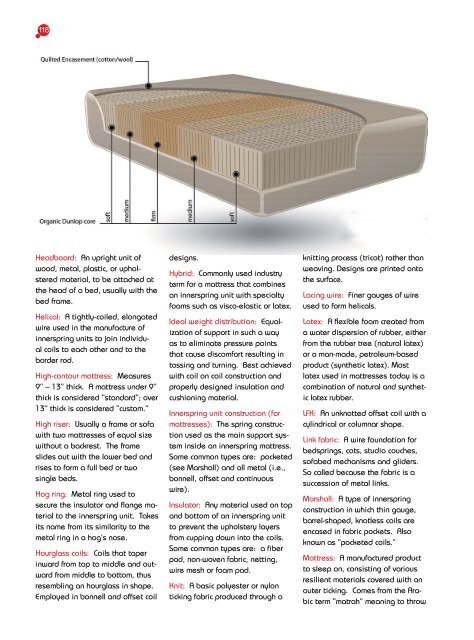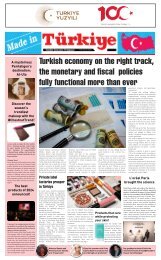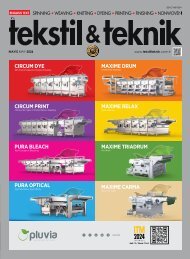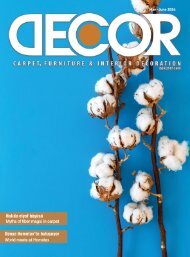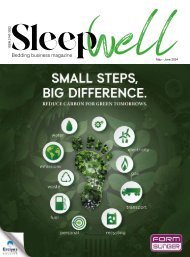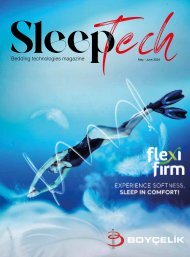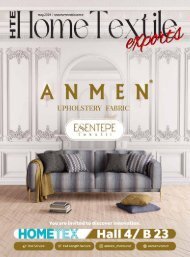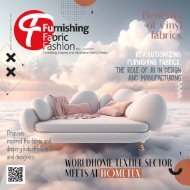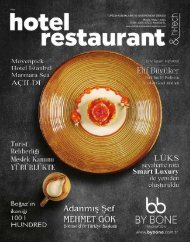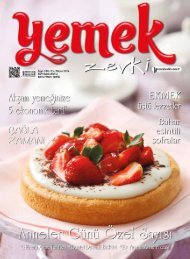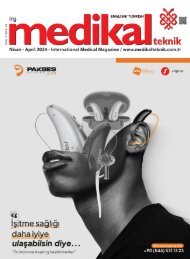SleepTech July - August 2018
SleepTech July - August 2018
SleepTech July - August 2018
You also want an ePaper? Increase the reach of your titles
YUMPU automatically turns print PDFs into web optimized ePapers that Google loves.
118<br />
Headboard: An upright unit of<br />
wood, metal, plastic, or upholstered<br />
material, to be attached at<br />
the head of a bed, usually with the<br />
bed frame.<br />
Helical: A tightly-coiled, elongated<br />
wire used in the manufacture of<br />
innerspring units to join individual<br />
coils to each other and to the<br />
border rod.<br />
High-contour mattress: Measures<br />
9” – 13” thick. A mattress under 9”<br />
thick is considered “standard”; over<br />
13” thick is considered “custom.”<br />
High riser: Usually a frame or sofa<br />
with two mattresses of equal size<br />
without a backrest. The frame<br />
slides out with the lower bed and<br />
rises to form a full bed or two<br />
single beds.<br />
Hog ring: Metal ring used to<br />
secure the insulator and flange material<br />
to the innerspring unit. Takes<br />
its name from its similarity to the<br />
metal ring in a hog’s nose.<br />
Hourglass coils: Coils that taper<br />
inward from top to middle and outward<br />
from middle to bottom, thus<br />
resembling an hourglass in shape.<br />
Employed in bonnell and offset coil<br />
designs.<br />
Hybrid: Commonly used industry<br />
term for a mattress that combines<br />
an innerspring unit with specialty<br />
foams such as visco-elastic or latex.<br />
Ideal weight distribution: Equalization<br />
of support in such a way<br />
as to eliminate pressure points<br />
that cause discomfort resulting in<br />
tossing and turning. Best achieved<br />
with coil on coil construction and<br />
properly designed insulation and<br />
cushioning material.<br />
Innerspring unit construction (for<br />
mattresses): The spring construction<br />
used as the main support system<br />
inside an innerspring mattress.<br />
Some common types are: pocketed<br />
(see Marshall) and all metal (i.e.,<br />
bonnell, offset and continuous<br />
wire).<br />
Insulator: Any material used on top<br />
and bottom of an innerspring unit<br />
to prevent the upholstery layers<br />
from cupping down into the coils.<br />
Some common types are: a fiber<br />
pad, non-woven fabric, netting,<br />
wire mesh or foam pad.<br />
Knit: A basic polyester or nylon<br />
ticking fabric produced through a<br />
knitting process (tricot) rather than<br />
weaving. Designs are printed onto<br />
the surface.<br />
Lacing wire: Finer gauges of wire<br />
used to form helicals.<br />
Latex: A flexible foam created from<br />
a water dispersion of rubber, either<br />
from the rubber tree (natural latex)<br />
or a man-made, petroleum-based<br />
product (synthetic latex). Most<br />
latex used in mattresses today is a<br />
combination of natural and synthetic<br />
latex rubber.<br />
LFK: An unknotted offset coil with a<br />
cylindrical or columnar shape.<br />
Link fabric: A wire foundation for<br />
bedsprings, cots, studio couches,<br />
sofabed mechanisms and gliders.<br />
So called because the fabric is a<br />
succession of metal links.<br />
Marshall: A type of innerspring<br />
construction in which thin gauge,<br />
barrel-shaped, knotless coils are<br />
encased in fabric pockets. Also<br />
known as “pocketed coils.”<br />
Mattress: A manufactured product<br />
to sleep on, consisting of various<br />
resilient materials covered with an<br />
outer ticking. Comes from the Arabic<br />
term “matrah” meaning to throw


